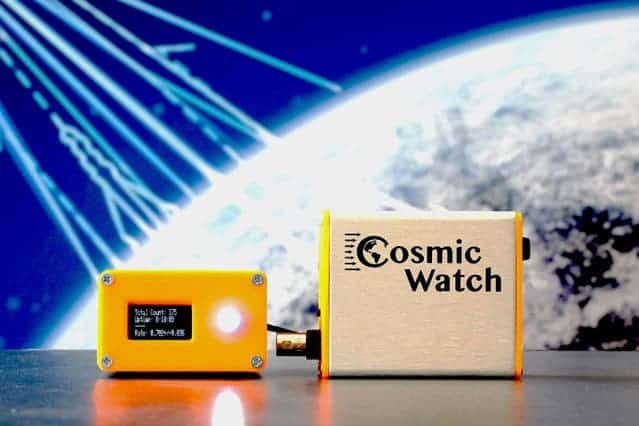With the price you’d pay for a big night out with your friends, you could build your very own muon detector.

Physicists at MIT have designed a pocket-sized cosmic ray muon detector to track these ghostly particles. Courtesy of the researchers.
Our planet is constantly showered with a cocktail of high-energy cosmic rays. Thankfully, we have the atmosphere to protect us, and the cosmic rays don’t really penetrate to the planetary surface; after colliding with the Earth’s atmosphere, they disintegrate into muons — elementary particles similar to the electron, but with a larger mass.
The problem is that muons disintegrate extremely fast. They can be found in every layer of the Earth’s atmosphere, circulating in the air around us, but they’re hard to study because their entire lifespan stretches to approximately 2.2 microseconds.
Now, physicists working in MIT’s Laboratory for Nuclear Science have designed a small, pocket-sized muon detector. Using only common, relatively cheap electrical parts, MIT researchers have built a detector that lights up and counts each time a muon passes through. It only costs $100 to build, if you have the necessary facilities.
Spencer Axani, the man behind the project, set up an outreach program called CosmicWatch with a website that lists where to buy all the parts and how to assemble them into a functioning device. The team estimates that it would take a high school student with average skills about 4 hours to build it, and then just one hour to build it a second time.
The more of these are built, the more useful the measurements get, Axani explains.
“If you make 100,000 of these, it starts becoming a very large detector,” Axani told Symmetry Magazine. “Instrumenting airplanes and ships would let you start measuring cosmic ray rates around the world.”
You might not get much of a thrill from the detector, but for a physics demonstration, or for unleashing your inner scientist, it’s a unique project which allows you to do some top notch science from the comfort of your bedroom. You might also get some secondary applications, such as checking the altitude you’re at — through muon detection.
“You get funny looks when you take particle detectors into the subway, but we did that in Boston,” Axani says. “Since the muon rate will decrease the further down you go, we put the detectors in a subway station to measure how far underground we were.”
“At sea level, you might see one count every two seconds […] but on a plane at cruising altitude, that rate increases by about a factor of 50 — a dramatic change,” Axani says. “From the measured rate you can back-calculate what the actual altitude of the plane was.”
Recently, a different team of researchers also identified a potential cavity beneath the Great Pyramid in Egypt using similar muon measurements.









